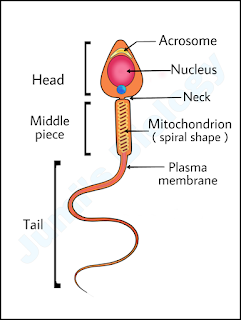Immunity: Human Health and Diseases ||Class 12 Biology
Immunity is the capacity of an organism to resist or defend itself from the development of a disease. Immunity involves both specific and non specific components. The non specific act as barriers or eliminators of a wide range of pathogens irrespective to their antigenic make-up. Other components of the Immune system adapt themselves to each new disease encountered and can generate pathogen specific Immunity.
Immunity is of two main types:
1. Innate Immunity
2. Acquired Immunity or Adaptive Immunity
1. Innate Immunity: It is type of Immunity which is present from the birth and is inherited from the parents. It is non-specific in nature.
Innate Immunity is of following main types of barriers-
i) Physical barriers: It prevent entry of microorganisms in the body, e.g. skin, mucus coating of epithelium, lining the respiratory, gastrointestinal and urogenital tracts.
ii) Physiological barriers: It prevent microbial growth in the body, e.g. acid in the stomach, saliva in the mouth, tears from eyes.
iii) Cellular barriers: These are mainly phagocytose and destroy microbs, e.g. some WBCs like polymorpho-nuclear leukocytes (PMNL- neutrophils) and monocytes and natural killer cells (type of lymphocytes) in the blood as well as macrophages in tissues.
iv) Cytokine barriers: These are virus-infected cells which secrete proteins called interferons. They protect non-infected cells from further viral infection.
2. Acquired Immunity or Adaptive Immunity: It is the type of Immunity which is not present from birth and develops during an individual's lifetime. It is pathogen specific in nature and is character used by memory as when it encounters a pathogen for the first time, it produces a response called primary response which is of low intensity. Further encounter with same pathogen produces highly intensified secondary or anamnestic response due to the memory of the first encounter.
Acquired Immunity is mainly two types:
i) Active immunity
ii) Passive immunity
i) Active immunity: Antibodies that develop in a person's own Immune system after the body is exposed to an antigen through a disease or when person get an Immunization.
Active immunity is further sub-divided into two types-
a) Natural active immunity
b) Artificial active immunity
a) Natural active immunity: It producing Antibodies in response to pathogenic infection.
b) Artificial active immunity: It producing antibodies in response to a controlled exposure to an attenuated pathogen (i.e. vaccination)
ii) Passive immunity: Antibody given to a person to prevent disease or to treat disease after the body is exposed to an antigen. This type of immunity is provided when a person is given antibodies to a disease rather than producing them through person's own immune system.
Passive immunity is also subdivided into two types-
a) Natural passive immunity
b) Artificial passive immunity
a) Natural passive immunity: Recieveing antibodies from naturally (e.g. IgG antibody to foetus via Placenta and IgA antibody to newborn via breast milk).
b) Artificial passive immunity: Recieveing antibodies from an external source via injection. (eg: antivenom injection, blood transfusion of monoclonal Antibodies).




Comments
Post a Comment
If you have any doubts,please let me know